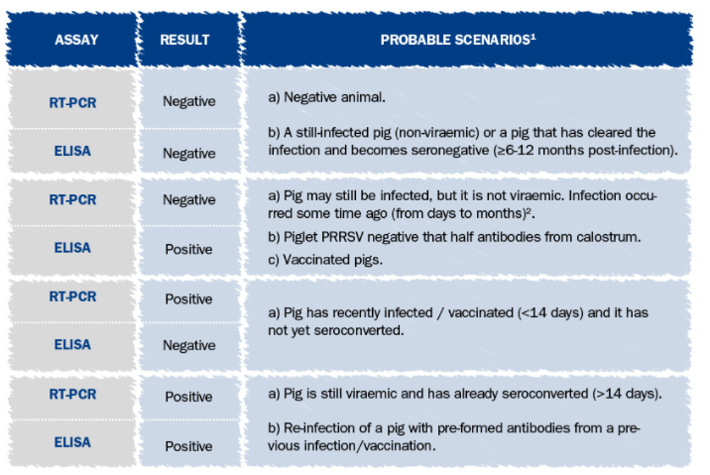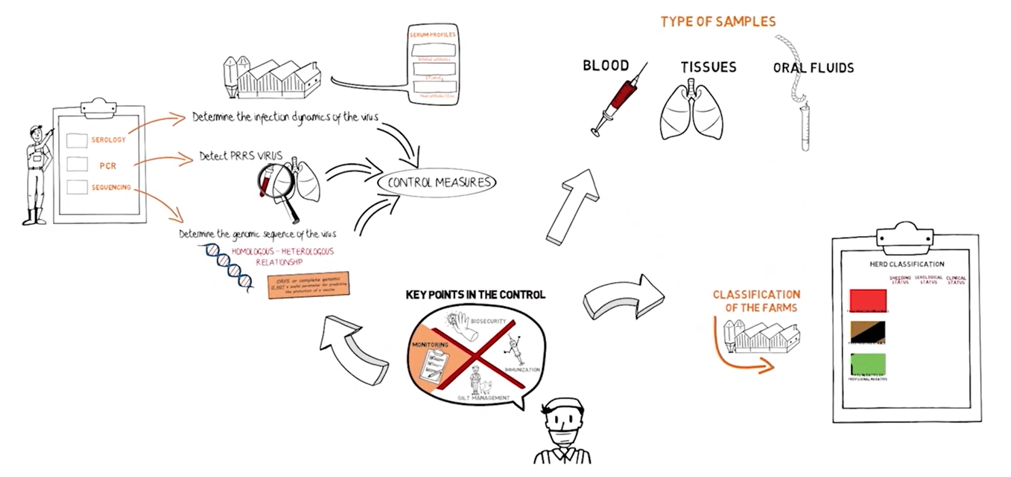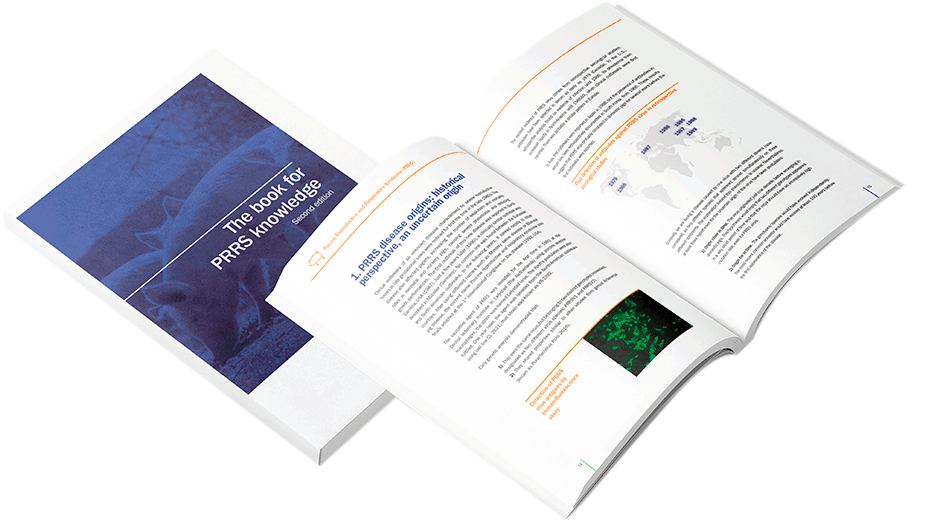Verify seroconversion of all animals on a farm is a method used today on multiplication and commercial farms in Spain/Europe? If it is, in what proportion of these evaluations are PCR and ELISA used? Is the gold standard always used or are other commercial options available? At what ages should samples be taken and how often should this be done to get a clear picture of what is happening on the farm?
Using ELISA to detect seroconversion is not the best method to verify if a farm has a homogeneous immune status that would prevent the PRRS virus from recirculating internally. After an infection, not all animals develop an immune response so, given a positive ELISA result and depending on the cases, there can always be a percentage of animals that do not have a response and remain negative, without this implying that they have not been infected.
Also, the duration of detectable antibodies with the ELISA test has a high individual variability, with no correlation with the duration of actual protection, which can also increase the percentage of negatives when serological monitoring of a population is done.
In general, ELISA is used to check the health status of breeding animals and thus to classify the farm as negative or positive, which is very important for multiplier farms that sell animals for life. It is also used to check if gilts that were negative to the virus at origin have become infected after an acclimation period. In this case ELISA is used in combination with the PCR test because we want the gilts to be non-viremic (PCR negative), but we do want there to have been contact (ELISA positive). When ELISA is used for this purpose, it is not necessary to aim to have 100% of the replacements be positive, since as previously mentioned, there may be variations in the percentage of animals that develop a positive reaction.
The best method to verify the stability of a positive farm is to check piglets at birth and/or at weaning, depending on the situation. The presence of virus in newborn piglets is tested by PCR either from the tongue tissues of dead or stillborn piglets or from piglet processing fluids (commonly testes).
The positivity, and especially the level of positivity (the viral load expressed as Ct), will indicate how stable the farm is. For example, when the Ct value rises above 27, the results obtained in the post-weaning phase improve in terms of mortality, and values above 34 would bring the farm back to obtaining results similar to those of a negative farm (Trevisan, G. et al. 2020).
Ideally, this type of monitoring should be performed monthly, although in certain situations it may be useful to increase or decrease the frequency. For example, we increase the frequency when we are in the process of stabilization and decrease it where stability has been reached and there are no elements that would make us suspect a regression. As for the number of samples, since they are processed as a pool, it is best to have representation from the maximum number of litters.
If you want to know more about PRRS diagnostic tools read out chapters: Diagnostic & monitoring
1. Trevisan G, et al. Relationship between weekly Porcine Reproductive and Respiratory Syndrome virus exposure in breeding herds and subsequent viral shedding and mortality in the nursery. Swine Health and Production 2020; 28(5): 244-253.
You can ask your own question! Visit Pig333.com and submit your question to the experts.

Marcovetgrup S.L. – Spain





